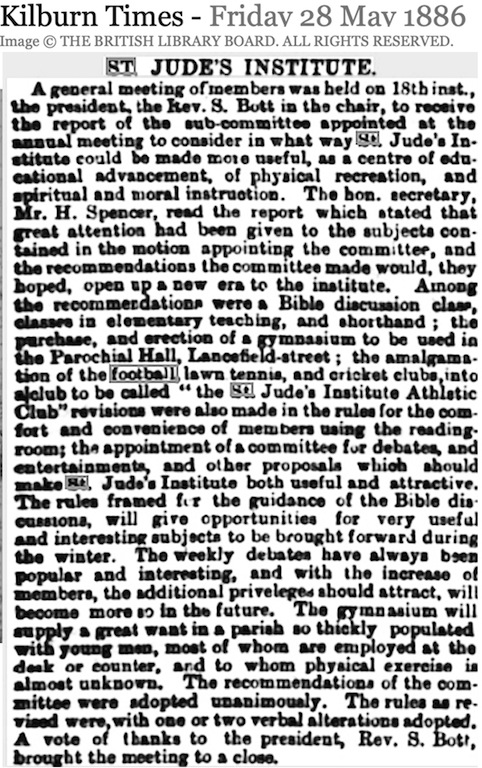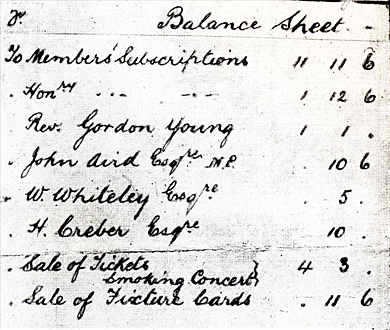Reg Hayter was a well known football journalist who had written a lot of club histories.The main sources for the oldiest history was Club Director Wodehouse Jr, who had been told by his father G. J. Wodehouse Sr.
The red numbers is statements which are analysied here. Blue numbers is unique for Hayeters which are analysed all together at the bottom of this section or together with another number.
1) The Christ Church Rangers FC is frequently mentioned in contemporary newspapers. The club is manage by the cousins Captain HG Handover and Club Secretary Alfred George. This is not a youth club but a well organised club with both first and second teams. They probably had a youth team also which Wodehouse could have been one of the first members.
The first reported match was in October 10 1883 The parish itself was formed in the spring of 1882. Christ Church Rangers was not a club with members from the parish but a club more likely started by the church with a wider catchment-area.
The first vicar Wrangler-Clarke was a sportsman, a cricketer himself. The youth club could have been formed in 1883 when Harrow Institute did a huge commitment on the youth of the porly Notting Dale area. Bill Law, Old Harrovians footballer and curator of the mother parish of Kensington was also responsible for the mission.
2) Wodehouse family had their roots in Norfolk and moved to Paddington were George James were born.
1868, Barnsdale Road, Paddingto.,
Notable is that QPRs Fred Weller was from Berkshire.
4) John Mcdonald and Fred Weller as founders of St Judes Institute follows Woods history. In other historics only John Mcdonald or John Mcdonald with help from teacher John Wrightson is mentioned as initiator to the club.
5) Boys Brigade of St Jude’s Church. This is an incorrect statement. The Boys Brigade was associated with the free-church and not Church of England. First brigade in London was at Kilburn 1886. There was also the Church Lads of Church of England but the first lads was from 1891.
6) Albert Pearsall born 1874 and was a player already as 14 years old in 1888. There is no records of him in the newspapers.
9) The new name Queen's Park Rangers had forerunner in Queen's Park Athletic used before St Judes Institute. Queens Park is a obvious name and Rangers from Christ Church Rangers. This is the best explanation of the name Rangers. See chapter below.
10 and 8) The not-complete merger story seemed to has vanished through times and is not given such great importance today, especially in short compacted historics, where it's often says it's a merger and no more. Hayter sayes in plain terms:"some of the Christchurch Rangers players joined St Jude's" and "This was not a complete amalgamation of the clubs".
11) Tape Crossbars is also mentioned in Wood's history. In terms of wording, it is very similar to Wood's text, probably taken from there. At the time it was not uncommon for tape, but modern crossbars had begun to be used by the better teams.
12) The information about riding pants is unique for Hayter. It is also confirmed by the first photo where the players' pants look like white riding pants.
13) This is a copy of Woods write in his history from 1805. But Gordon Young first begun in the parish as curator in 1887 long after the creation of the club. More in Conclusion section.
14) This is also exactly as in Woods history from 1805. The correct name is Welfords Home Farm as it's says in contemporary newspapers and also by Woods himself in an intervue. "Fields" could be some sort of typo.
|
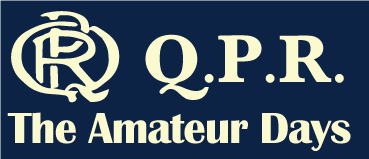

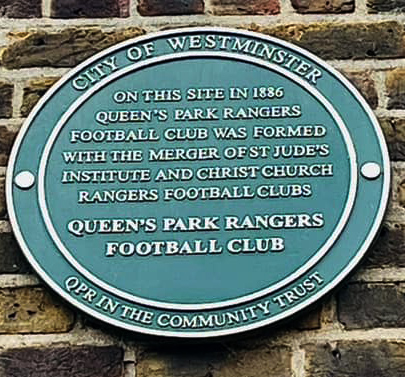
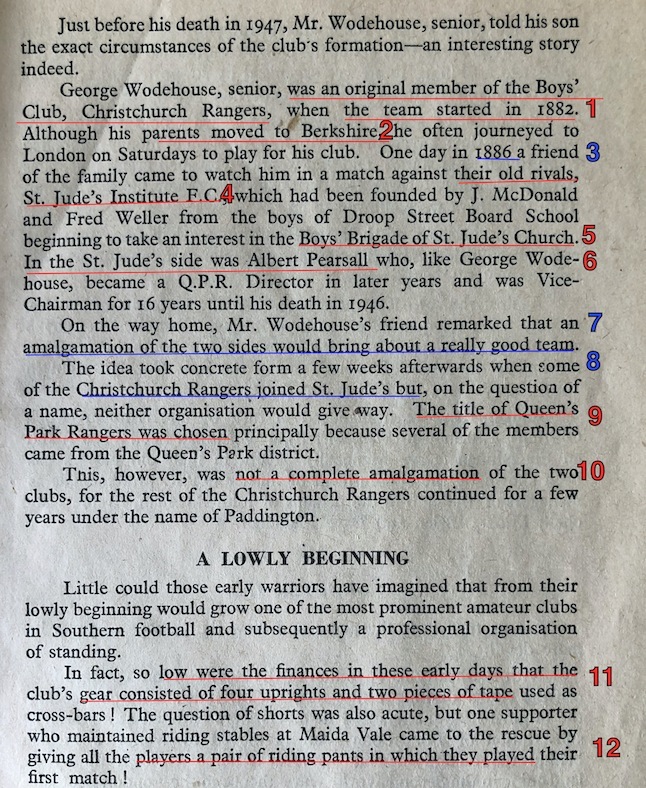

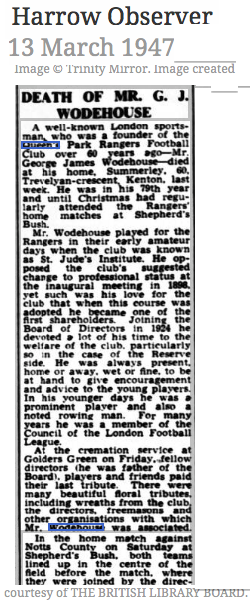
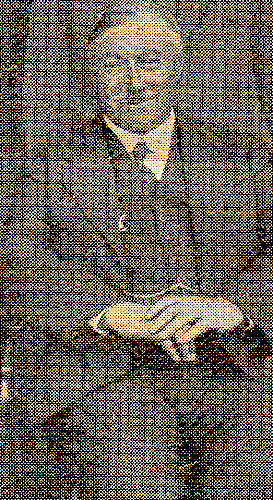
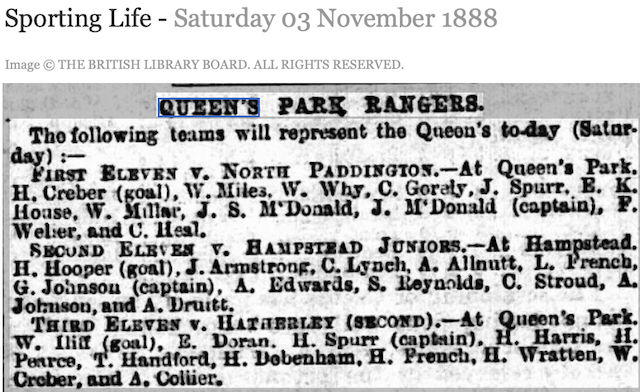
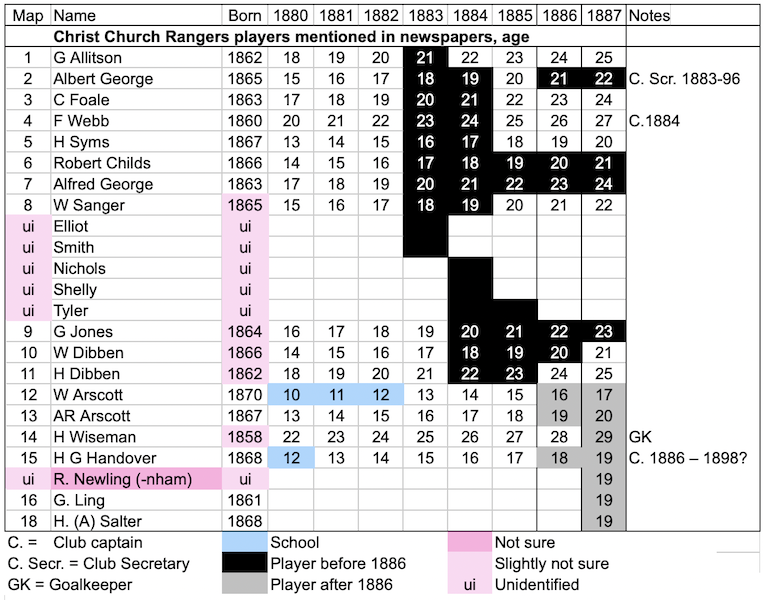
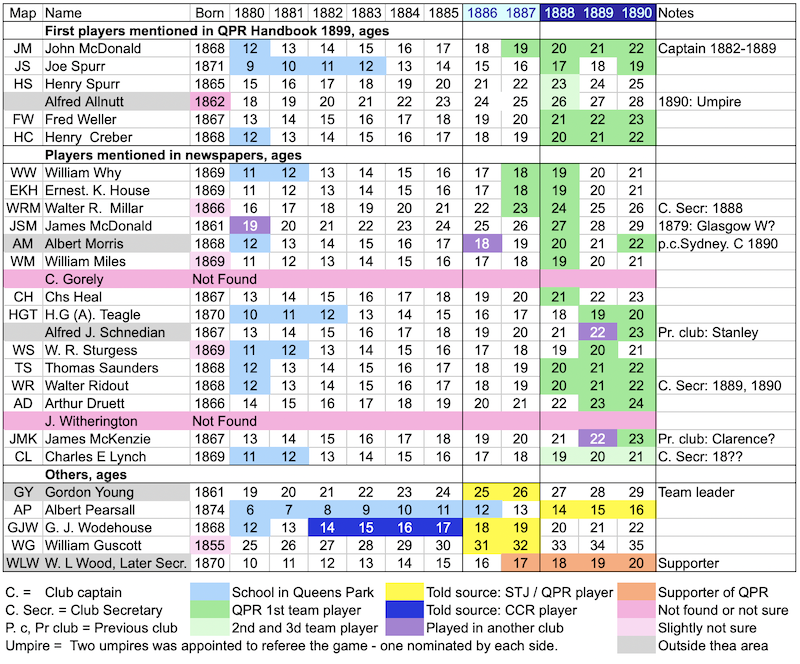
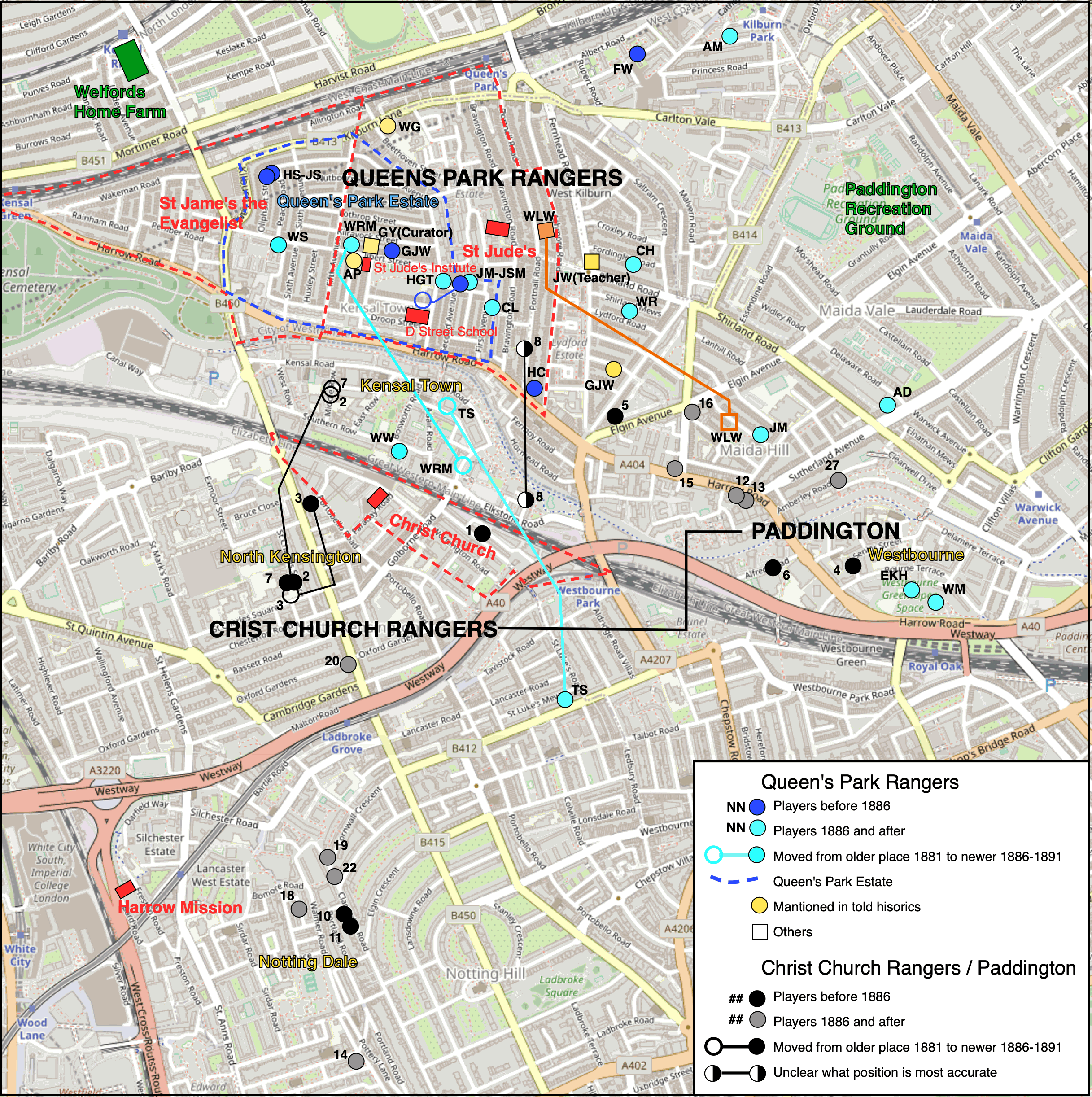
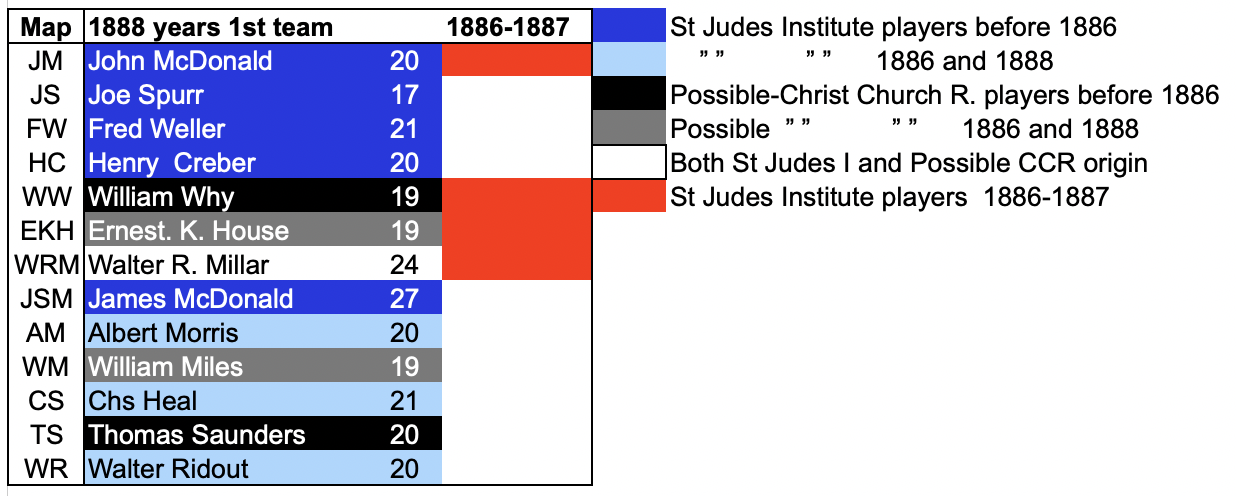

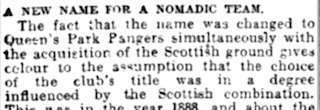


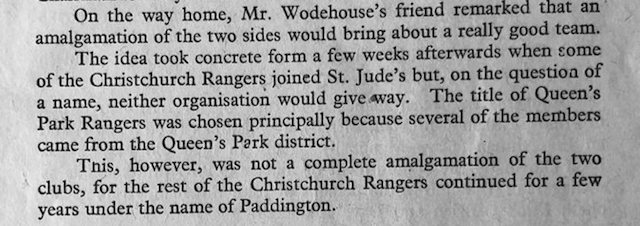
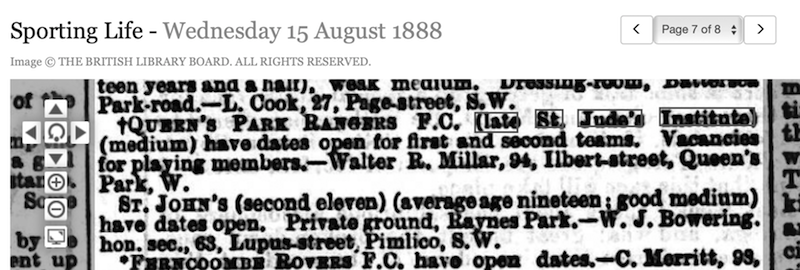
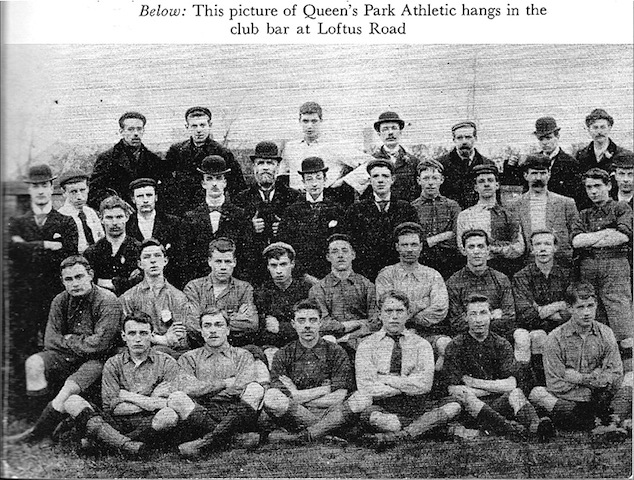 Fig 15.
Fig 15.